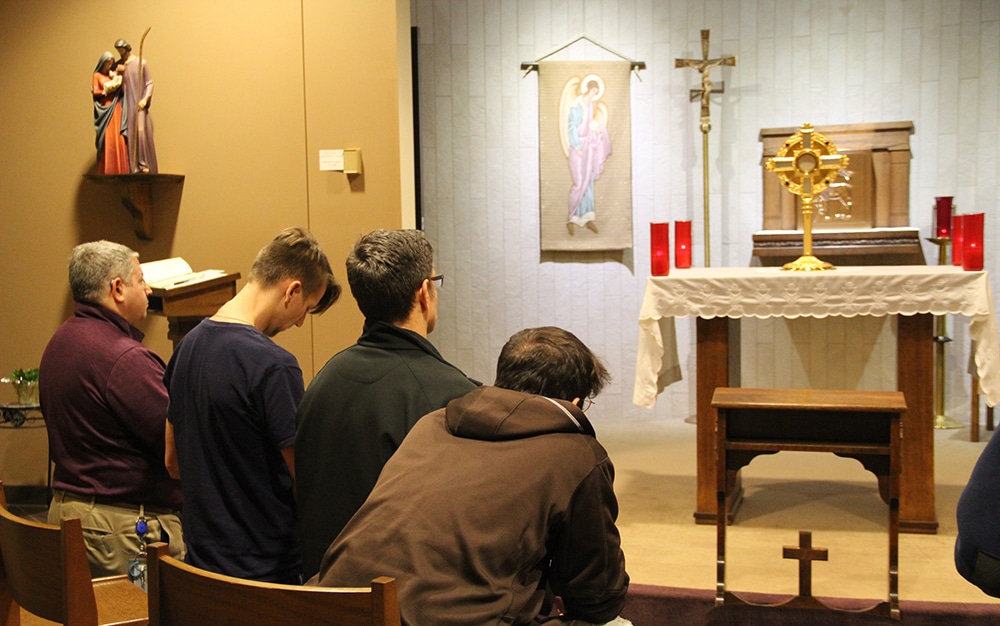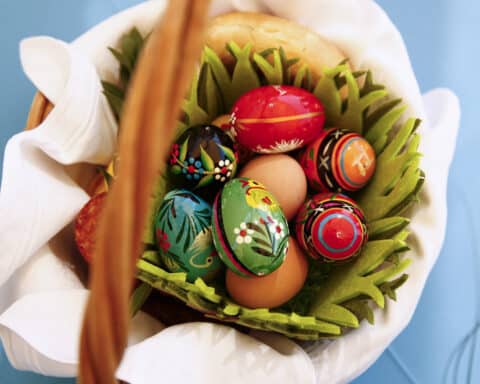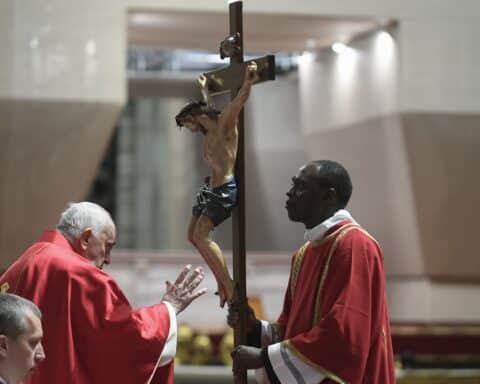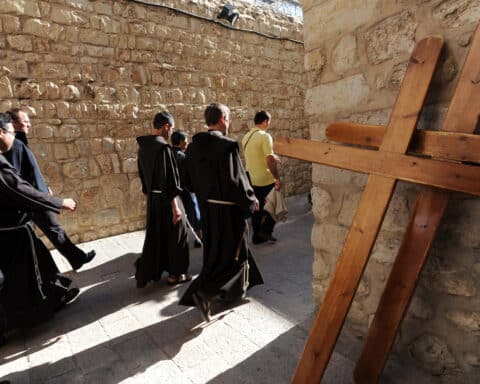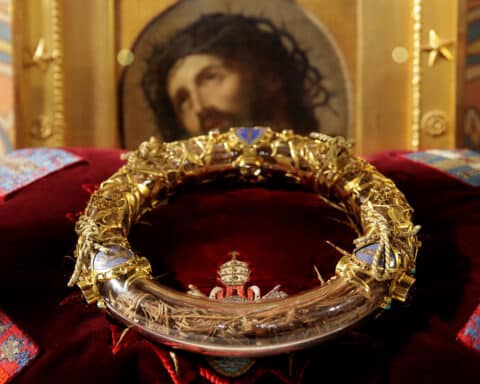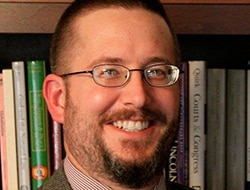
As I write, I’m 28 days in and glad that I’ve made this commitment. Maybe not at 6:30 every morning, as the water that has been crystallizing in the pipes during the night hits the top of my head, but certainly at 7 a.m., as I begin my daily Holy Hour before the Blessed Sacrament at Sts. Peter and Paul, just down the street from our home here in Huntington, Indiana.
As a liturgical season and a Christian discipline, Lent always made sense to me. Gregory the Great spoke of this season as the “tithe” of the year — one-tenth given back to God in gratitude for all he has given to us. And who doesn’t resonate with the story of the Israelites as they struggle to leave behind Egypt, the land of sin, and wander in the desert for 40 years, falling back again and again into their old ways, praising God one day and grumbling against him the next, marked by their faith yet not always faithful, before finally entering into the Promised Land?
For 40 years now, I’ve given up television for Lent, fasted, tried to increase my prayer, and prepared — sometimes well and sometimes badly — for the feast of the Lord’s resurrection. One thing I’ve never done until this year, though, is to add a daily Holy Hour into the mix.
I wasn’t sure what to expect. It’s one thing intellectually to understand what a daily Holy Hour might mean — to read, for instance, Venerable Fulton J. Sheen’s reflections in his autobiography, “Treasure of Clay,” on the daily Holy Hour that he made for over 60 years — but it’s another thing to live it. I stepped into the presence of Our Lord that first day not sure what I would do for such a long period of time, and found that it was over before it even seemed to have begun. With each succeeding day, I have found that, in the moment, time slows, stops, yet passes all too quickly — a paradox that I cannot explain except to say that it has something to do with being in the presence of the One who made time itself, and who seems to delight, as G.K. Chesterton reminds us, in paradox.
“Neither theological knowledge nor social action alone is enough to keep us in love with Christ unless both are preceded by a personal encounter with him,” wrote Archbishop Sheen in his reflection on his decades of Holy Hours. “When Moses saw the burning bush in the desert, it did not feed on any fuel. The flame, unfed by anything visible, continued to exist without destroying the wood” — another paradox! “So personal dedication to Christ does not deform any of our natural gifts, disposition or character; it just renews without killing. As the wood becomes fire and the fire endures, so we become Christ and Christ endures.”
“In my end,” wrote T.S. Eliot, “is my beginning,” and in the beginning of my day is my end. Kneeling before the Blessed Sacrament in the silence of a church lit by flicker of the sanctuary lamp, I cannot help but be reminded that every moment of my day is properly aimed at only one end, and that end is Christ.
Scott P. Richert is publisher for OSV.

